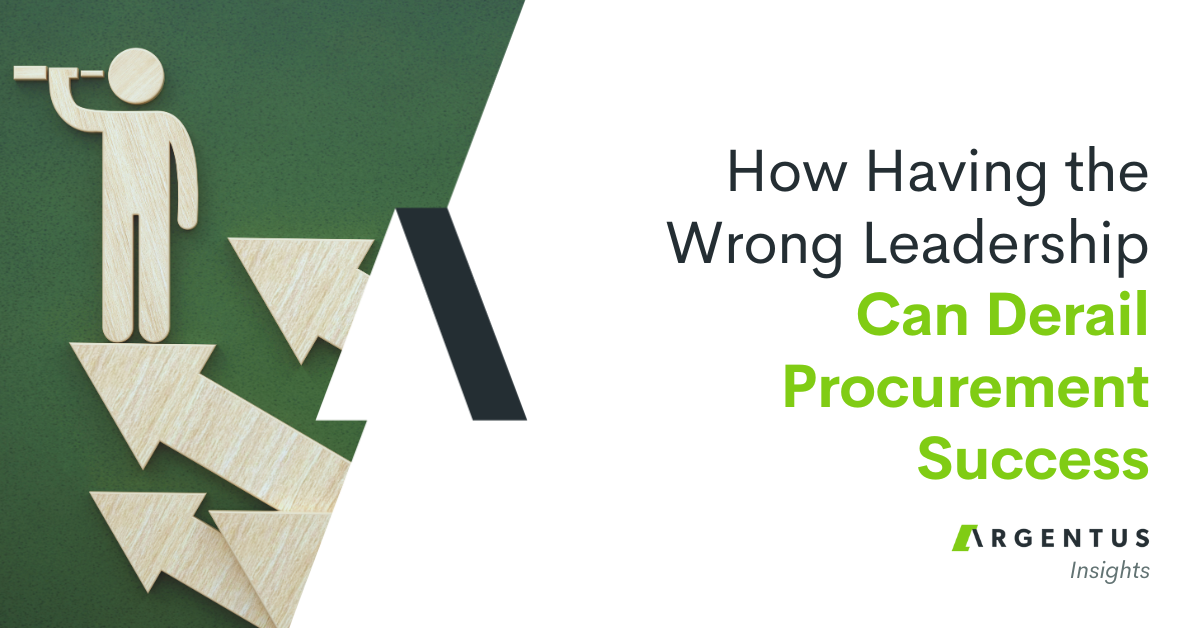Thanks to our regular guest blogger Elaine Porteous for this really great post – she is always full of great information about the world of Strategic Sourcing. With the Procurement talent market being as tight as it is, it’s really important for companies to know where the pain points are in hiring. Enjoy the read and please do pass it along to those in the field Argentus might not yet be connected with.
Mature procurement teams have influence over the majority of the third-party controllable expenditure in their organisations. For others, some categories of spend may be no-go areas for either historical reasons or because they seem too difficult to grasp, for a variety of reasons.
Indirect spend on support services is the most difficult area to tackle. Categories such as professional services, I.T and telecommunications and human resources may be challenging areas but need not be out-of-bounds.
Within professional services, there are commodities (also called sub-categories) which have some common themes, which if addressed properly, can yield great results. Marketing, management consulting, legal and insurance are commodities that have unclear pricing structures that take time to understand fully, but we need to persevere.
Marketing services
This category is complex and requires focus, stamina and patience. Traditionally, advertising agencies have been the major recipients of marketing spend, some providing a one-stop service, maybe with no contract or service level agreement (SLA). The chosen agency would often oversee a wide portfolio including media buying, printed matter, brand management and public relations with poor price disclosure and hidden margins. The status-quo is a comfortable place but the digital agency era has arrived. Contracts have to be revisited and a new way of working with agencies must be devised.
Legal services
Even though the legal services area is complex, it is possible to build credibility with the in-house legal team through understanding:
- what their needs and issues are
- which areas have potential for savings
- how better value can be achieved from external legal firms.
The low-end, routine or commoditized legal services are the easiest to address. Learn the language of attorneys so that you can express your sourcing ideas in words they can understand. Managing supplier relationships with law firms need to be focused on minimising bad behaviours and rewarding and incentivising those who provide accurate, transparent pricing and deliver excellent service and good advice.
Pricing of professional services
The trend is towards full price transparency which is a relief for procurement, but it is making life somewhat difficult for the companies submitting bids for new work. Suppliers have been known to undercut on price in order to win the deal, and then ratchet up fees, claiming scope-creep. A tactic in consulting has been to allocate juniors to the tasks that seniors have been selected and priced for, potentially compromising the advice being given but definitely improving their profit margin.
There are three main types of pricing models:
- Project based fees – this is where there are clearly defined deliverables and timelines,g. an event with a start date and clear deliverables within given time frame.
- Cost plus (or Time and Expenses). These are open-ended fees based on rate cards (hourly or daily rates per each skill level). This method is more difficult to manage and is best used only on projects where the scope is unclear or is subject to change.
- Contingent fees. This is where the fee is dependent on pre-determined metrics or multiple performance milestones but it doesn’t work so well in professional services.
I.T and telecommunications
Sourcing and contracting I.T services is different from any other category. Where the function is mission critical to the company operations, e.g. in banks and insurance companies, procurement and sourcing professionals need to be totally immersed in the category and its commodities which can include: software licences, hardware, peripherals, servers, data and telephony, 3D printing, warranties and maintenance. Highly developed inter-personal skills are needed to build relationships with stakeholders. This category is developing into a career path of its own and companies regularly recruit internal candidates with in-depth knowledge.
Tips to help you succeed in difficult categories:
- Develop a database for each type of service by evaluating current suppliers, their pricing structures and capabilities
- Research the market by benchmarking pricing and services to establish competitiveness of current suppliers
- Establish what sets of skills you need for each type of service so that you can determine which suppliers can provide them
- Identify incentives to improve relationships with your incumbent suppliers and aim to consolidate your base
- Re-negotiate and improve the contractual terms and conditions, pricing models and rates on current agreements and/or go to market with a well-thought outsourcing
This article was previously published in Bespoke Sourcing Bulletin



0 Comments